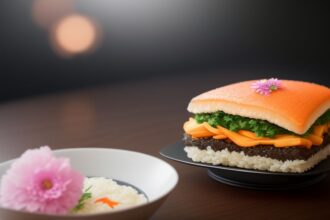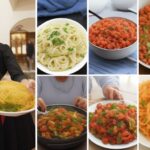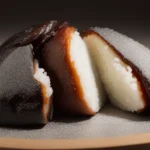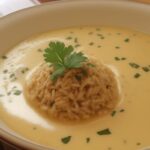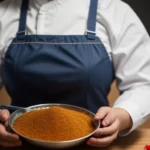Chinese cuisine is renowned worldwide for its rich flavors, diverse ingredients, and exquisite presentation. The art of Chinese cooking has been passed down through generations, with traditional techniques being preserved and modern innovations adding a new dimension to this ancient culinary tradition. In this article, we will explore the fascinating world of Chinese cooking, from classic recipes to cutting-edge inventions, shedding light on the key principles that make Chinese cuisine so unique and beloved.
1. A Brief History of Chinese Cooking
Chinese cooking can be traced back thousands of years, with a rich culinary tradition that has evolved over time. The earliest known Chinese cookbook dates back to the Qin Dynasty (221-206 BC), and since then, Chinese cuisine has continued to develop and diversify, influenced by various factors such as geography, climate, and culture.
2. The Five Key Flavors of Chinese Cooking
Chinese cuisine is known for its emphasis on balancing five key flavors: sweet, sour, bitter, spicy, and salty. These flavors are carefully combined to create harmony in each dish, with no one flavor overpowering the others. This balance of flavors is a hallmark of Chinese cooking and sets it apart from other culinary traditions.
3. Traditional Techniques in Chinese Cooking
Traditional Chinese cooking techniques are designed to bring out the natural flavors of ingredients while preserving their nutrients. Some of the most common techniques include stir-frying, steaming, braising, and deep-frying. Each technique requires precision and skill, with chefs often spending years perfecting their craft.
4. The Importance of Fresh Ingredients in Chinese Cooking
Fresh ingredients are the cornerstone of Chinese cooking, with chefs placing a strong emphasis on sourcing the best-quality produce. From seasonal vegetables to locally caught seafood, fresh ingredients are essential for creating delicious and authentic Chinese dishes. In Chinese cuisine, the quality of the ingredients is often more important than the complexity of the recipe.
5. Classic Chinese Recipes: From Peking Duck to Mapo Tofu
Chinese cuisine boasts a wide range of classic recipes that have stood the test of time. Peking Duck, a dish that dates back to the Ming Dynasty, is a prime example of Chinese culinary excellence. Other iconic dishes include Mapo Tofu, Kung Pao Chicken, and Dim Sum. These dishes showcase the diversity and creativity of Chinese cooking.
6. Regional Cuisines in China
China is a vast and diverse country with a wide range of regional cuisines, each with its own unique flavors and ingredients. Some of the most famous regional cuisines include Sichuan, Cantonese, Hunan, and Shandong. Each region has its own culinary traditions and specialties, adding another layer of complexity to Chinese cooking.
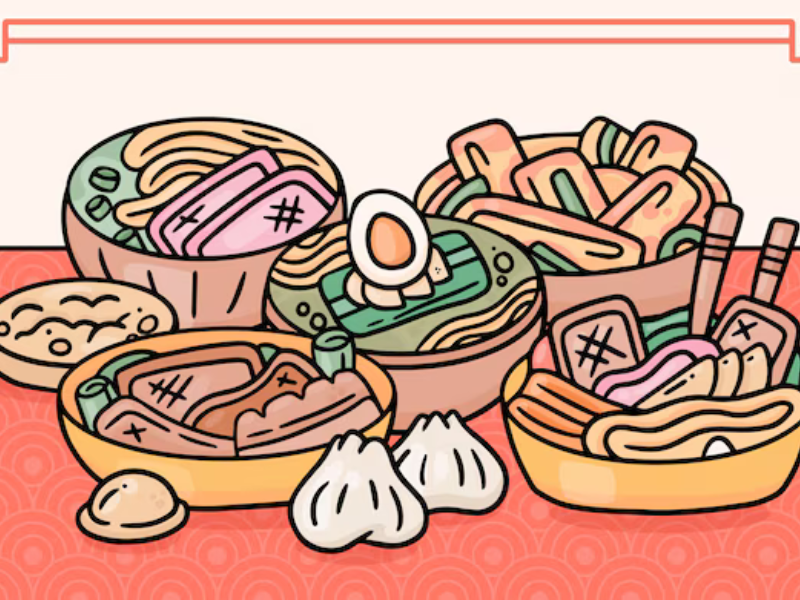
7. Modern Innovations in Chinese Cuisine
While traditional techniques remain at the core of Chinese cooking, modern chefs are also experimenting with new ingredients and techniques to push the boundaries of the cuisine. Molecular gastronomy, fusion cuisine, and plant-based cooking are just a few of the trends that are shaping the future of Chinese cuisine. These innovations are helping to keep Chinese cooking relevant and exciting in a rapidly changing culinary landscape.
8. Preserving Traditional Techniques in Chinese Cooking
Despite the rise of modern innovations, many chefs are committed to preserving traditional techniques in Chinese cooking. From hand-pulled noodles to traditional claypot cooking, these time-honored methods are an integral part of Chinese culinary heritage. By passing down these techniques to future generations, chefs are ensuring that the art of Chinese cooking continues to thrive.
9. The Role of Presentation in Chinese Cuisine
In Chinese cuisine, presentation is just as important as flavor. A well-presented dish not only enhances the dining experience but also reflects the skill and artistry of the chef. From intricate vegetable carvings to elaborate plating techniques, Chinese chefs pay close attention to every detail to create visually stunning dishes.
10. The Influence of Chinese Cooking on Global Cuisine
Chinese cooking has had a profound influence on global cuisine, with Chinese restaurants found in nearly every corner of the world. Dishes like General Tso’s Chicken and Sweet and Sour Pork have become popular staples in Western countries, showcasing the enduring appeal of Chinese flavors. As Chinese cuisine continues to evolve, its impact on the global culinary scene is only expected to grow.
11. The Future of Chinese Cooking: Sustainability and Innovation
As the world becomes more environmentally conscious, Chinese chefs are increasingly focusing on sustainability in their cooking. Locally sourced ingredients, zero-waste cooking techniques, and plant-based alternatives are all becoming more prevalent in Chinese cuisine. By embracing these practices, Chinese chefs are not only creating healthier dishes but also contributing to a more sustainable future for food.
12. The Importance of Cultural Exchange in Chinese Cooking
Cultural exchange plays a crucial role in the evolution of Chinese cooking. As Chinese cuisine becomes more popular worldwide, chefs are incorporating ingredients and techniques from other culinary traditions to create fusion dishes that blend the best of both worlds. This cross-cultural exchange enriches Chinese cooking and helps to broaden its appeal to a global audience.
13. The Art of Chinese Cooking: A Living Tradition
In conclusion, the art of Chinese cooking is a living tradition that continues to evolve and adapt to the changing times. With a strong foundation in traditional techniques and a willingness to experiment with new ingredients and flavors, Chinese chefs are keeping this ancient culinary art form alive and thriving. Whether you’re savoring a classic dish or trying a modern fusion creation, Chinese cooking offers a world of flavors and experiences to explore.
14. Resources for Learning Chinese Cooking
For those interested in delving deeper into Chinese cooking, there are a variety of resources available to help you learn more about this fascinating culinary tradition. From cookbooks and online courses to hands-on cooking classes, there are plenty of opportunities to enhance your skills and knowledge of Chinese cuisine. By immersing yourself in the art of Chinese cooking, you can gain a greater appreciation for the flavors, techniques, and cultural significance of this time-honored culinary tradition.
15. Embracing the Art of Chinese Cooking
In a world filled with fast food and processed meals, the art of Chinese cooking offers a welcome respite for those seeking a more fulfilling and authentic dining experience. By embracing the principles of balance, harmony, and creativity that define Chinese cuisine, you can elevate your cooking and dining experiences to new heights. So why not step into the kitchen and start exploring the art of Chinese cooking today? Your taste buds will thank you.
FAQs about “The Art of Chinese Cooking: Traditional Techniques and Modern Innovations”
- What sets “The Art of Chinese Cooking: Traditional Techniques and Modern Innovations” apart from other Chinese cookbooks? “The Art of Chinese Cooking” offers a unique blend of traditional techniques and modern innovations, providing readers with a comprehensive understanding of Chinese cuisine. It combines time-honored recipes with contemporary approaches, making it suitable for both novice and experienced cooks.
- Which aspects of Chinese cooking are covered in this book? This book covers a wide range of aspects of Chinese cooking, including essential techniques, ingredients, regional specialties, and contemporary interpretations of classic dishes. It provides insights into the cultural heritage and culinary traditions that define Chinese cuisine.
- Are specific Chinese dishes featured in this culinary guide? Yes, “The Art of Chinese Cooking” features a diverse selection of Chinese dishes, from beloved classics like kung pao chicken and Peking duck to innovative creations that reflect modern culinary trends. Each dish is accompanied by detailed instructions and tips for achieving authentic flavors.
- How does this book balance traditional techniques with modern innovations in Chinese cooking? This book strikes a balance between traditional techniques and modern innovations by showcasing classic recipes alongside contemporary interpretations. It explores how traditional ingredients and flavors can be combined with modern cooking methods and ingredients to create exciting new dishes.
- Can readers expect to gain insights into the cultural heritage of Chinese cuisine in this book? Absolutely! “The Art of Chinese Cooking” delves into the cultural heritage of Chinese cuisine, exploring its origins, influences, and significance in Chinese society. Readers will learn about the historical and cultural context of Chinese dishes, as well as the traditions and customs associated with Chinese culinary customs.
Advantages:
- Evocative language: The title “The Art of Chinese Cooking: Traditional Techniques and Modern Innovations” uses descriptive terms to suggest a combination of culinary tradition and innovation, immediately capturing the reader’s interest.
- Educational value: The title implies a comprehensive exploration of Chinese cooking, offering readers insights into both traditional techniques and contemporary innovations in Chinese cuisine.
- Gastronomic exploration: Readers can anticipate discovering a variety of Chinese dishes, from classic favorites to modern interpretations, providing them with a well-rounded understanding of Chinese culinary traditions.
- Practicality: By focusing on Chinese cooking techniques, the title appeals to readers interested in honing their culinary skills, providing them with practical tips and insights to improve their cooking.
- Inspiration for cooking: The title may inspire readers to try cooking Chinese dishes at home, offering them a balance of traditional methods and innovative approaches to recreate the flavors of China in their own kitchens.
Disadvantages:
- Lack of specificity: While traditional techniques and modern innovations are mentioned, the title does not specify which dishes or cooking methods will be explored, leaving readers uncertain about the scope of the content.
- Potential oversimplification: Focusing solely on traditional techniques and modern innovations may oversimplify the richness and diversity of Chinese culinary traditions, overlooking regional variations and cultural nuances.
- Accessibility of ingredients: Some Chinese dishes may require specific ingredients that are difficult to find outside of China or major culinary hubs, limiting the practicality of the recipes for some readers.
- Cultural appropriation: Without proper context and understanding, celebrating Chinese cooking techniques could risk appropriating cultural elements without acknowledging their significance or respecting their origins.
- Dietary restrictions: Chinese cuisine often includes ingredients like soy sauce, oyster sauce, and various animal products, which may not be suitable for individuals with dietary restrictions or preferences, potentially alienating some readers.



